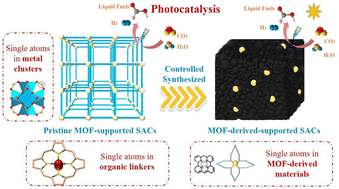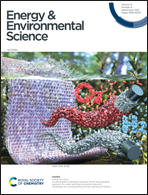Single atoms meet metal–organic frameworks: collaborative efforts for efficient photocatalysis
Abstract
Photocatalysts with metal single atoms (SAs) as active sites have attracted widespread interest owing to their maximum atomic utilization efficiency, well-defined active centers and outstanding photocatalytic activity. In recent years, metal–organic frameworks (MOFs) have emerged as promising supports/precursors to create single atom catalysts (SACs) because of their high porosity, functional adjustability, structural tailorability, and abundant potential anchoring sites. This review aims to provide a comprehensive summary of the development of MOF-supported SACs for efficient photocatalysis. Firstly, the roles of MOFs and SAs in photocatalytic systems and their synergistic effects in boosting photocatalytic performance are thoroughly discussed. Subsequently, the types of SAs supported on MOFs are categorized to reveal their formation process and coordination environment. Furthermore, the advanced characterization tools for identifying and examining the atomic structure of SAs supported on MOFs are highlighted. Thereafter, the advances of MOF-supported SACs for photocatalytic energy conversion are also comprehensively introduced, including the CO2 reduction and hydrogen generation reaction. Finally, insights into the technical challenges are provided and the future research directions are proposed, which will hopefully stimulate the design of advanced MOF-supported SACs for efficient photocatalysis.



 Please wait while we load your content...
Please wait while we load your content...